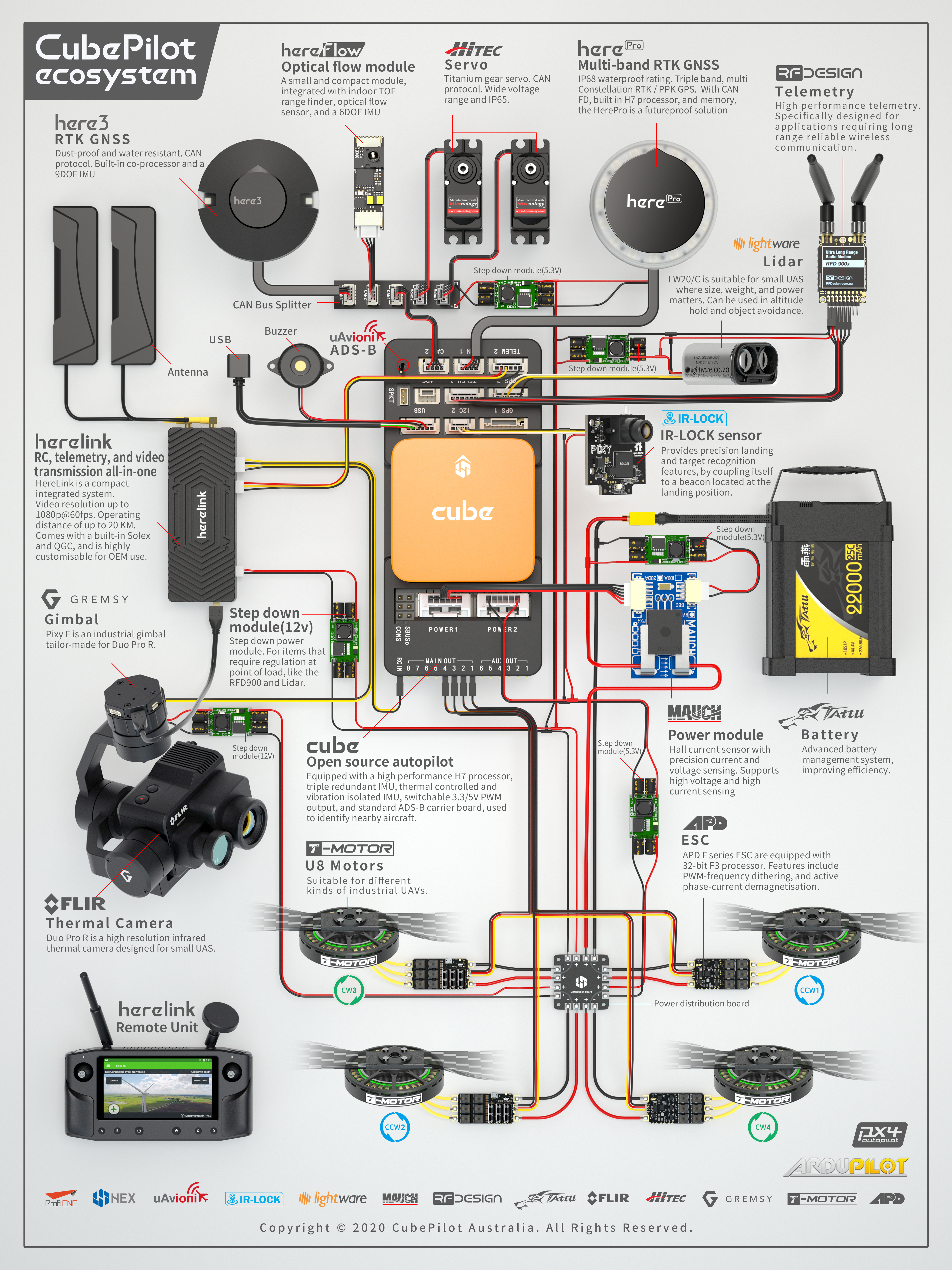Introduction:
In the realm of autonomous systems and robotics, the Pixhawk Cube Orange has emerged as a true game-changer. With its advanced capabilities, versatility, and reliability, the Pixhawk Cube Orange has become the go-to choice for professionals and enthusiasts alike. In this blog post, we will delve into the features and benefits of this remarkable autopilot system, showcasing its significant impact on the field of unmanned aerial vehicles (UAVs).

-
Understanding Pixhawk Cube Orange:
The Pixhawk Cube Orange is a high-performance flight controller designed for autonomous aerial vehicles. Developed by ProfiCNC and Hex Technology, this state-of-the-art autopilot system builds upon the success of its predecessor, the Pixhawk Cube. It is an open-source platform compatible with ArduPilot and other software stacks, making it highly customizable and adaptable to various applications.
-
Key Features and Specifications:
This system boasts an impressive set of features and specifications that set it apart from other autopilot systems. Some of its notable characteristics include:
- Powerful STM32H743 microcontroller for enhanced processing capabilities.
- Built-in triple redundant IMU system for accurate and reliable sensor data.
- Multiple I/O options, including UART, CAN, I2C, and SPI interfaces, for seamless connectivity with peripheral devices.
- Dual power inputs for redundancy and failsafe operation.
- Wide operating temperature range, enabling deployment in diverse environments.
- Extended flight duration with efficient power management.
-
Advanced Flight Control Capabilities:
This system offers advanced flight control capabilities which makes it suitable for a wide range of applications. It supports autonomous missions, waypoint navigation, and precise position hold. With its comprehensive sensor suite, including GPS, compass, accelerometer, and gyroscope, it ensures accurate attitude estimation and robust stabilization during flight. The system also integrates with various sensors, such as lidar and cameras, enabling advanced perception and obstacle avoidance.
-
Safety and Reliability:
Safety is a paramount concern in the realm of autonomous systems, and the Pixhawk Cube Orange excels in this aspect. Its redundant design ensures failover in case of hardware or sensor failures, allowing for a safe return to home or landing. The system’s built-in health monitoring capabilities provide real-time feedback on the status of critical components, enabling preemptive actions to prevent potential issues. With its reliable performance and redundancy, the Pixhawk Cube Orange instills confidence in the operators and ensures the safety of the aerial vehicle.
-
Community and Support:
One of the greatest strengths of Cube Orange lies in its vibrant and supportive community. The open-source nature of the platform encourages collaboration and knowledge sharing among enthusiasts, researchers, and professionals. A wealth of resources, including forums, documentation, and software updates, are readily available, making it easier for users to get started and solve problems. The community’s collective expertise and continuous development efforts contribute to the growth and evolution of the Pixhawk Cube Orange ecosystem.
Conclusion:
The Pixhawk Cube Orange represents a significant advancement in the field of autopilot systems, bringing powerful capabilities and exceptional reliability to unmanned aerial vehicles. Its feature-rich design, advanced flight control capabilities, and safety mechanisms make it an ideal choice for a wide range of applications, from aerial photography and surveying to industrial inspections and research. As this system continues to evolve and gain popularity, it promises to revolutionize the way we interact with autonomous systems and pave the way for exciting new possibilities in the future.

